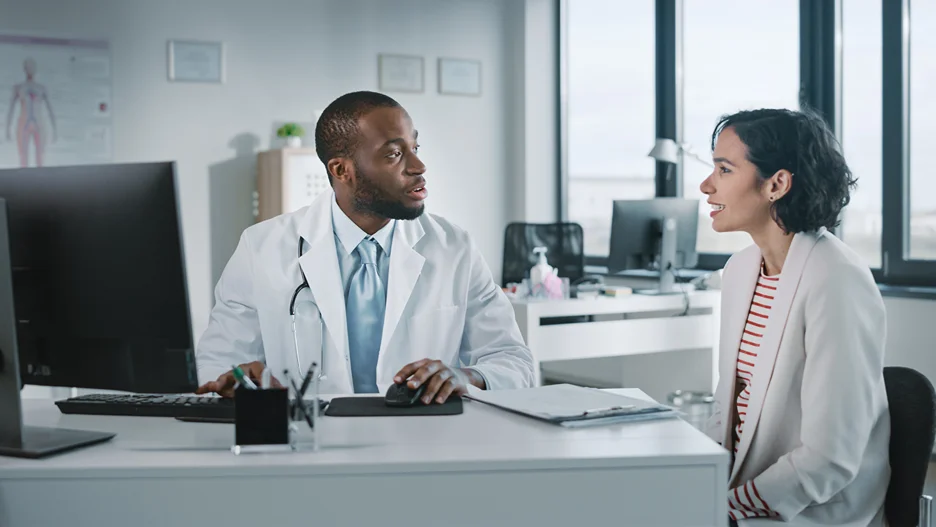Optimizing electronic medical record (EMR) documentation through streamlined workflows, accurate data capture, interoperability, user-friendly interfaces, and specialized features can transform healthcare delivery, empowering clinicians and improving patient outcomes.
EMR systems have become the backbone of modern healthcare, storing vast amounts of patient data. Yet, the way we interact with and utilize this data is constantly evolving.
Can you imagine a healthcare world where every patient interaction is meticulously documented, data flows seamlessly between systems, and clinical insights are readily available at a glance? This is the promise of improved electronic medical record (EMR) documentation. But how do we transform this vision into reality?

The future of EMRs lies in intuitive interfaces that mirror clinical thought processes.
These are the directions many EMR vendors are heading. Templates are a powerful tool for standardizing documentation, ensuring that essential information is captured consistently. However, the best templates are flexible, allowing clinicians to tailor them to individual patient needs while maintaining a structured format.
These are emerging as valuable allies in the fight against documentation burden.
Imagine an EMR system that alerts you to potential errors as you type, ensuring that every medication dose, allergy, and lab result is accurate. Data validation tools can further enhance accuracy by cross-checking information against external databases and flagging inconsistencies.
Natural language processing (NLP) is a game-changer for extracting key information from unstructured clinical notes. This technology can identify diagnoses, procedures, and medications, automatically populating structured fields in the EMR and ensuring accurate coding.
Even the most sophisticated EMR system is only as good as the people using it. Ongoing education and training are essential for ensuring that providers understand the system's capabilities, follow best practices for documentation, and embrace new technologies as they become available.
EMR data is a goldmine of information, but it's often underutilized. Advanced data analytics tools can sift through vast datasets, identifying trends in disease prevalence, treatment effectiveness, and patient outcomes. This information can be used to improve care pathways, inform research, and drive quality improvement initiatives.
The ideal healthcare ecosystem is one where patient data flows seamlessly between different EMR systems. This requires the adoption of interoperability standards like Fast Healthcare Interoperability Resources (FHIR), which enable different systems to "talk" to each other and share information in a standardized format.
As we increase the use of EMR data, it's crucial to maintain strict privacy and security measures. De-identification techniques can help protect patient confidentiality while still allowing researchers and clinicians to access valuable data.
A well-designed EMR interface should be intuitive, easy to navigate, and customizable to individual preferences.
In today's fast-paced healthcare environment, clinicians need access to EMR data anytime, anywhere. Mobile EMR apps can enable providers to review patient records, document encounters, and communicate with colleagues from their smartphones or tablets.
Healthcare is increasingly a team sport. EMR systems should facilitate collaboration by allowing team members to share notes, discuss treatment plans, and track patient progress in real time.
While the core principles of improved documentation apply across all medical specialties, some fields have unique requirements that necessitate specialized EMR features.
Cardiology EMRs should seamlessly integrate with cardiac imaging systems, enabling cardiologists to view echocardiograms, electrocardiograms, and other diagnostic images directly within the patient record.
Oncology EMRs should include features for tracking chemotherapy regimens, radiation therapy plans, and tumor response data. They should also support clinical decision support tools to assist with complex treatment decisions.
Mental health EMRs should prioritize patient privacy and confidentiality, with robust security measures in place. They should also include features for documenting psychotherapy sessions, tracking medication adherence, and assessing patient progress.
Aesthetic medicine EMRs like Calysta EMR focus on visual documentation, including high-resolution photo storage for before-and-after comparisons, standardized aesthetic assessment tools, and integration with 3D imaging or simulation software. Additionally, these systems should streamline consent processes and track product usage for both safety and inventory management.

As telemedicine becomes more prevalent, it's essential to integrate telehealth platforms with EMR systems. This allows clinicians to document virtual visits directly within the patient record, ensuring that all relevant information is captured and accessible to the care team.
Remote patient monitoring (RPM) devices collect a wealth of data, including vital signs, medication adherence, and patient-reported outcomes. Integrating RPM data into the EMR allows clinicians to monitor patient progress remotely, identify potential issues early, and intervene proactively.
The future of healthcare hinges on our ability to harness the power of EMR data. By investing in intuitive interfaces, intelligent automation, interoperability, and user-centered design, we can create EMR systems that empower clinicians, improve patient care, and drive innovation in healthcare delivery. The journey towards improved EMR documentation is ongoing, but the potential rewards are immense.